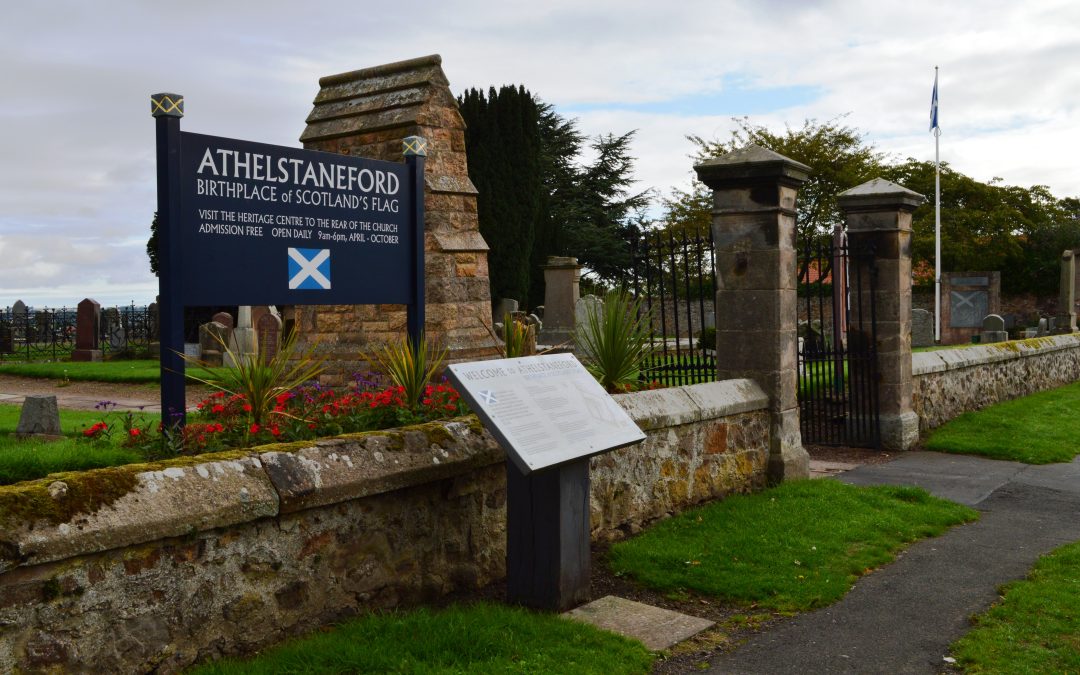The museum showcases a wide range of flags, from national flags to military banners and ceremonial standards. Visitors can learn about the symbolism and meaning behind different flags, as well as their historical and cultural significance. The centre also hosts regular exhibitions and events, making it a great destination for anyone interested in flags and their role in society.
History of Flag Heritage Centre
The Flag Heritage Centre is located in Athelstaneford, East Lothian, Scotland. The Centre was established in 1971 to commemorate the Battle of Athelstaneford, which took place in the Dark Ages. The battle is believed to have been fought between the Picts and the Northumbrians, led by King Athelstan of England.
The Flag Heritage Centre is housed in a 16th-century doocot, which was restored in the 1970s. The restoration work was carried out by the East Lothian Council and the National Trust for Scotland. The doocot is a unique historic site and is one of only a few remaining in Scotland.
The Flag Heritage Centre houses a collection of flags and banners, which represent the rich history of Scotland. The collection includes flags from the 16th century to the present day. The Centre also has a collection of documents and artefacts related to the Battle of Athelstaneford and the history of Scotland.
The Centre is dedicated to preserving and promoting the heritage of Scotland. It provides visitors with an opportunity to learn about the history of Scotland and the importance of the Battle of Athelstaneford. The Centre also hosts a range of events and exhibitions throughout the year, which celebrate the history and culture of Scotland.
The Saltire
The Saltire has a rich history and is believed to have been used as a symbol of Scotland since the 9th century. However, it wasn’t until 1385 that it was officially recognized as the national flag of Scotland.
The adoption of the Saltire as the national flag of Scotland is said to have come about after a battle in which the Scottish army saw a white cross against a blue sky, which was interpreted as a sign from Saint Andrew.
Today, the Saltire is a widely recognized symbol of Scotland and is flown proudly at many events and occasions, both within Scotland and around the world.
In addition to its use as the national flag of Scotland, the Saltire is also used by a number of Scottish organizations and institutions, including the Scottish Government and the Scottish Parliament.
Athelstaneford Parish Church and the Doocot
Athelstaneford Parish Church is a historic church located in the village of Athelstaneford in East Lothian. The church dates back to the 12th century and is known for its beautiful architecture and rich history.
The Doocot is also known as the Lectern Doocot because it has a carved stone lectern inside. This lectern was used by the minister to read from the Bible during services.
The Doocot was an important part of life in Athelstaneford during the 18th and 19th centuries. Pigeons were kept in the Doocot and their droppings were used as fertilizer for the fields. The Doocot is now a protected building and is a popular spot for visitors to take photos.
The Athelstaneford Parish Church and the Doocot are both important parts of the heritage of East Lothian. The church is still in use today and is a beautiful example of Scottish architecture. The Doocot is a unique building that provides a glimpse into the past and is a must-see for anyone visiting the area.
The Saltire Memorial
The Flag Heritage Centre in East Lothian is home to the Saltire Memorial, which commemorates the history and heritage of the Scottish flag. The memorial features a 15-metre flagpole, which proudly displays the Saltire, Scotland’s national flag.
The Saltire Memorial is a popular attraction for visitors to the Flag Heritage Centre, and is a must-see for anyone interested in Scottish history and heritage. The memorial is a testament to the enduring popularity of the Saltire, which remains one of the most recognisable flags in the world.
Visitors to the Saltire Memorial can learn about the history of the Saltire, including its origins and the various meanings that have been attached to it over the centuries. The memorial also provides an opportunity to explore the wider history of Scottish culture, and the role that the Saltire has played in shaping Scottish identity.
St Andrew and the Battle of Athelstaneford
St Andrew is the patron saint of Scotland, and his influence can be seen throughout the country’s history. One notable event in which St Andrew played a role was the Battle of Athelstaneford in 832 AD.
At the time, the area now known as East Lothian was part of Northumbrian territory, and the Saxons were attempting to expand their control. King Angus of the Picts, with the help of St Andrew, led his army to victory over the Saxons in a battle that took place near the village of Athelstaneford.
Today, the Flag Heritage Centre in East Lothian celebrates the history and significance of the Scottish flag. Visitors can learn more about St Andrew and the Battle of Athelstaneford, as well as the many other events and individuals that have contributed to Scotland’s rich heritage.
Visiting the Flag Heritage Centre
If you are looking for an exciting and informative visitor attraction in East Lothian, look no further than the Flag Heritage Centre. This museum is dedicated to the rich history of flags and banners, and it offers a range of exhibits and displays that are sure to please visitors of all ages.
One of the highlights of the Flag Heritage Centre is the audio-visual dramatisation, which brings to life the stories behind some of Scotland’s most famous flags. Visitors can also explore the interpretive timeline, which traces the evolution of flags and banners from ancient times to the present day.
The Flag Heritage Centre is open daily from April to October, and admission is free. Visitors can reach the museum by bus or by car, and there is ample parking available on-site. The museum is also fully accessible, with an accessible pathway and landscaping that includes St. Andrew’s paving.
In addition to its exhibits and displays, the Flag Heritage Centre also offers a range of amenities for visitors. There is a gift shop where you can purchase souvenirs and memorabilia, as well as a café where you can grab a bite to eat. Whether you are a history buff or just looking for a fun day out, the Flag Heritage Centre is an attraction that is not to be missed.
Future Developments
The Flag Heritage Centre in East Lothian is constantly evolving to offer exciting new experiences to its visitors. Under the leadership of David Williamson, the Centre’s Director, there are several exciting developments planned for the future.
One of the most significant developments is the expansion of the Centre’s exhibition space. This will allow for the inclusion of more exhibits and interactive displays, making the Centre an even more engaging and informative destination for visitors of all ages.
Another exciting development is the creation of a new website for the Centre. The new website, currently under development by Saltire.scot, will offer a more user-friendly experience for visitors, as well as providing up-to-date information on upcoming events and exhibitions.
In addition to these developments, the Centre is also working on expanding its educational offerings. The Centre already offers a range of educational programmes for schools and other groups, but there are plans to expand these offerings to include more in-depth workshops and courses on flag history and design.

